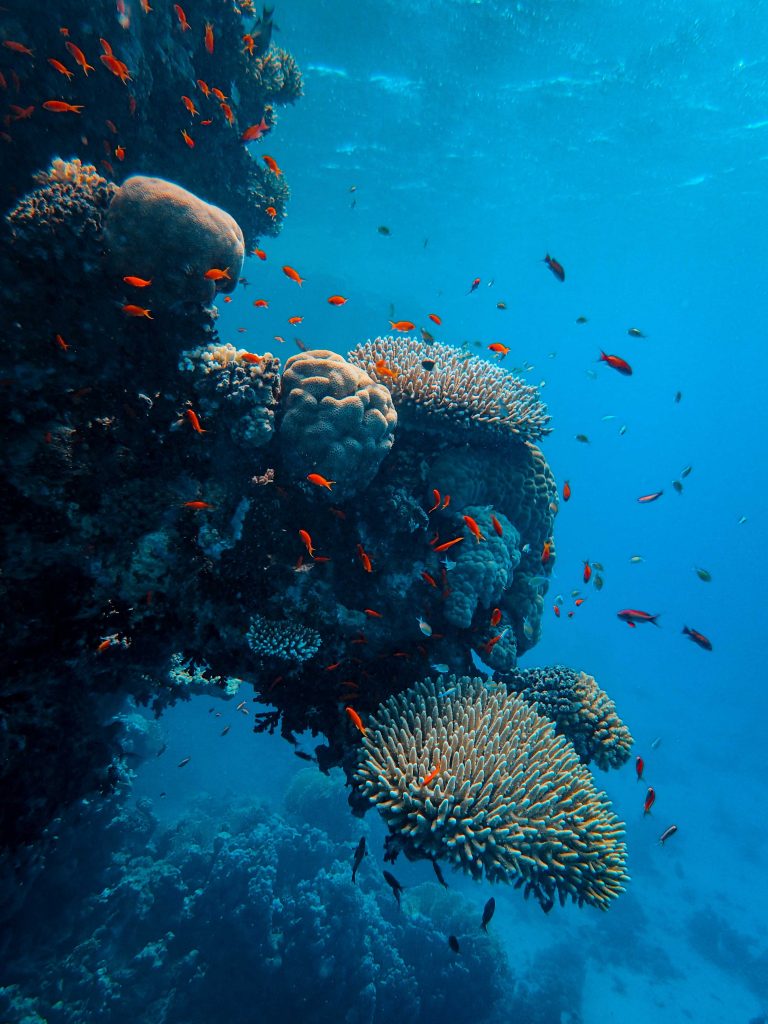At a glance, it’s a vast blanket of aesthetic blues, and when you look a little deeper it’s the most beautiful sight. The complex mixtures of shapes, sizes, and colors could be difficult to fathom due to their magnificence. Why? Because it’s the ocean! And today we celebrate World Ocean Day along with the theme for 2021, The Ocean: Life & Livelihoods.
As our dependence on ocean resources expanded, it was crucial to keep ourselves aware of the significant roles of the ocean in our lives and ways people could protect the life and livelihoods that rely upon it. This vital understanding led to the concept of World Ocean Day in 1992. In December 2008, the UN General Assembly designated June 8 to celebrate the ocean.
Our Dependence on the Ocean
Everyday, consciously or otherwise, we use resources that are associated with the ocean. Whether through our seafood; the agar that we use to make our dessert; the shipment of packages that we ordered online; active ingredients in our cosmetics; medicines; or something as simple as salt, to quote Nicole LeBoeuf, National Ocean Service Acting Assistant Administrator, “it is nearly impossible for most Americans to go a single day without eating, wearing, or using products that come from or through our coastal communities.”
Destructive human practices have led to the deterioration of ocean health throughout the years with the depletion of fish populations, pollution, dying of coral reefs, and considerably more. The importance of the ocean is not to be underrated. We think of trees and plants as primary sources of oxygen when in reality almost 70% of the oxygen is produced by marine plants. The ocean also absorbs about 30% of carbon dioxide released into the atmosphere, playing a vital role in the stability of nature and climate regulation. Risking marine health means that the lives both inside and outside the ocean are in jeopardy. In 2015, the implementation of ‘United Nations Sustainable Development Goal 14: Life Below Water’, targeted several objectives to protect and sustainably use marine resources while providing economic benefits to persons whose livelihoods depend on it.
The Role of the Blue Economy
The marine industry in the U.S. plays a significant role in the economy, contributing $373 billion towards the nation’s gross domestic product and employing around 3 million people. A study conducted by NOAA & IOOS® depicts the diverse market sectors involved in the Ocean Enterprise. It advocates the potential future growth opportunities by facilitating relationships between sectors for mutual advantages and raising awareness and visibility of this important cluster. Some of the chief market sectors in Ocean Enterprise that help facilitate the Blue Economy include the following:
Environmental Monitoring
The observations of changes using various tools and techniques are vital towards understanding the current and changing state of the ocean and climate. Ocean Monitoring Indicators (OMIs) showcase variables such as ocean temperature, sea level, sea ice, and pH, which are utilized by scientists, decision-makers, and government agencies to assess the impact of natural and human-induced activities in ocean health and climate change.
Hydrographic Surveying
Hydrographic data comprises water depth, topographic features of the seafloor and coastline, the position of possible obstructions, and other physical features of water bodies. It is typically used in creating nautical charts for safe, efficient, and ecological marine transportation and also supports activities such as dredging, coastal engineering, detecting fisheries habitats, and studying marine geological processes.
Coastal Protection
Coastal erosion is critical to control as it can cause coastal flooding and lead to the loss of coastal systems, harbors, and other infrastructure. Coastal systems are vital for the absorption of wave energies, shelter for fauna, and protection of freshwater.
Playing Our Part to Protect the Ocean
These are just a few of the diverse market sectors within the Blue Economy. Other large sectors include weather & ocean forecasting, water & water quality, renewable energy and the fishing industry. In recent times, numerous small and large-scale ocean reviving strategies have been established. A few of them are Project Seagrass, Project STOP, The Ocean Cleanup, and Fishing for Plastic. Many fisheries have switched to or continued their traditional and sustainable fishing practices, like the Ashtamudi clam fishery. The UN has also declared a Decade of Ocean Science for Sustainable Development (2021- 2030) to strengthen the management of the international coastlines. We can aid these efforts with just minor changes in our daily lives. Primarily, it is important to educate and spread awareness regarding the present and possible future issues.
Moreover, choosing sustainably sourced seafood including novel cell-cultured seafood and promoting artisanal fisheries, minimizing the intake of imported seafood and the use of single-use plastic items are all important steps in maintaining the stability of the ocean for our survival. The way the ocean and its life supports us is limitless and it is crucial that we respect and help it thrive.
Happy World Ocean Day!
